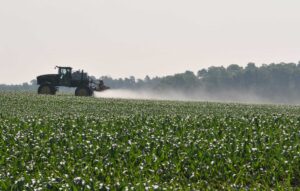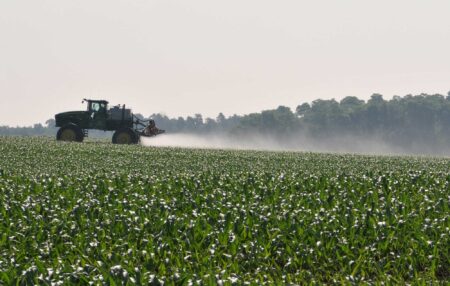The sky is the limit when it comes to the utility of drones on the farm, and their popularity is soaring. Uses range from crop scouting and fungicide application to seeding cover crops.
Over the past decade, the use of spray drones has been doubling year-over-year, said Arthur Erickson, CEO at Hylio. “Drones have a lot of benefits when it comes to deposition and efficacy of the application of fungicides,” he said. Even with reduced carrier rates, you’re still getting equal if not better control of the fungus compared to a ground sprayer.”
Prices range from a few thousand dollars for smaller drones with cameras for scouting, to $40,000 for the larger spray drones. While the investment is less than a traditional ground rig, there are some considerations before adding one or more to your farm fleet.
License to Fly
Drone operators must satisfy several requirements in the eyes of the Federal Aviation Administration (FAA), said Jim Love, light robotics manager for Beck’s Hybrids. “If you’re doing it pursuant to whatever business you’re in, by law, you need to have a Part 107 Remote Pilot Certificate,” he said. For a spray done, you also need your Part 137 and a state applicator aerial license.”
The process can take a few months, but the curriculum teaches the rules of the sky. “It makes you a better pilot, and you’ll get more done because of it,” Love said.
Tight Turns and Spaces
Joseph Kern added drones to his southern Indiana operation in 2023 as a means of having more control over fungicide applications, but it quickly became an opportunity for custom application.
“One of the reasons drones work in our area is because we have so many woodlands and small acreages in the middle of these hills with woods,” Kern said of his home area of Spencer County. “It can be dangerous for airplanes to navigate, so it’s perfect for the drone.”
Love recommends a realistic expectation of acres that can be covered in a day. “I tell people for starters, a couple [of] hundred acres, and you might be able to double that if you are really efficient or your field size works out,” he said. “Don’t decide to spray several thousand acres in year one. Taper it over time.”
Battery Power
Keeping batteries cool in the heat of summer is key, said Jacob Larkin, Precision Technical Institute farm coordinator with Precision Planting, who runs about four batteries per drone. “As soon as the battery comes out of the drone, it goes right on the charger,” he said. “They are getting heated up flying, and again when they charge, so you want them to cool down before using them again.”
Love recommends finding a good used diesel generator that can handle the battery charging needed to keep the drones in the air. “If there is an opportunity to buy a good diesel 12-kW or 20-kW generator, that’s a good investment,” he said.
‘A Young Man’s Game’
Tending a drone applying fungicide isn’t all fun and games and can be physically demanding. “It’s a young man’s game,” Love said. “At 90–100°F, running around carrying batteries and trying to keep drones in the air, it’s important [that] people know that this is a lot of work.”


:max_bytes(150000):strip_icc()/54422218704_4306ac9563_o-233521f62c594e098877df4c9a3cba63.jpg)




:max_bytes(150000):strip_icc()/KernDronePatternFlightWEB-a12123c08e734ea0ada3ff441c2bb6fc.jpg)



:max_bytes(150000):strip_icc()/Ship-docked-at-Port-Houston-1741d74fc460476881a4754e9ad43f42.jpg)
:max_bytes(150000):strip_icc()/54163679242_59f748f514_oSAFethanolplant-Iowa-d55130af73f44d9cb58b780fbdef60f2.jpg)